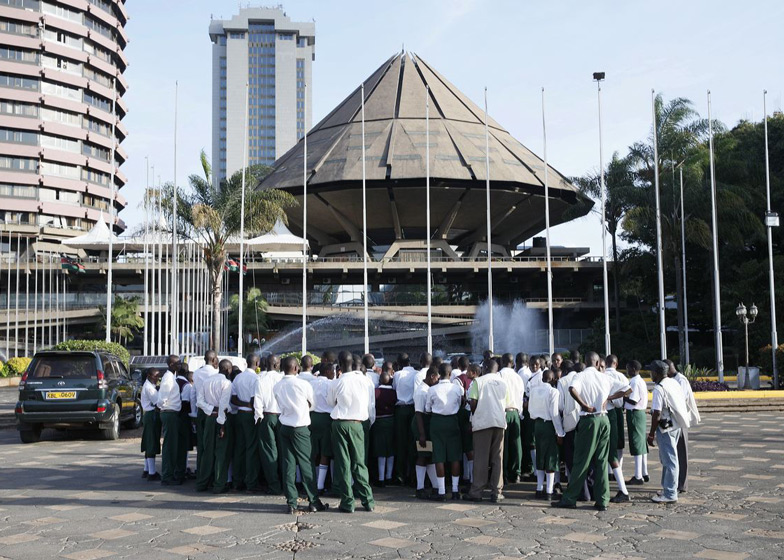Venice Architecture Biennale 2014: photographers Iwan Baan and Mette Tronvoll are showing images of Nordic-influenced architecture built in East Africa in the 1960s and 70s, at the Nordic Pavilion during the Venice Biennale this week.
Entitled Forms of Freedom: African Independence and Nordic Models, the exhibition will focus on the period after the liberation of Kenya, Tanzania and Zambia – when architects tried to export the social democratic model of Nordic countries for the modernisation of this part of Africa.
Photographs by Iwan Baan and Mette Tronvoll revisit works including the Kenyatta International Conference Centre (KICC) in Nairobi – designed by Karl Henrik Nøstvik to host the first World Bank Conference in Africa in 1973 – and the secondary schools built as part of the Zambia World Bank Education Project.
"The leaders of the new African states wanted partners without a murky colonial past, and established solid bonds with the Nordic countries, built on a mutual belief in progress," said the exhibition organisers in a statement.
The exhibition opens this week as part of the 14th Venice Architecture Biennale. It is curated by Nina Berre of Norway's National Museum of Art, Architecture and Design, assisted by Gro Bonesmo of Norwegian studio Space Group.
Follow Dezeen's coverage of the Venice Biennale »
Read on for more information from the exhibition organisers:
Forms of Freedom. African Independence and Nordic Models
The Nordic Pavilion, Venice, 7 June–23 November 2014
The exhibition at the Nordic Pavilion at la Biennale di Venezia has been titled "Forms of Freedom: African Independence and Nordic Models". The exhibition will explore and document how modern Nordic architecture was an integral part of Nordic aid to East Africa in the 1960s and 1970s. The resulting architecture is of a scope and quality that has not previously been comprehensively studied or exhibited.
African Independence and Nordic Models
The liberation of Tanzania, Kenya and Zambia in the 1960s coincided with the founding of state development aid in the Nordic countries, where there was widespread belief that the social democratic model could be exported, translated, and used for nation-building, modernisation and welfare in Africa.
The leaders of the new African states wanted partners without a murky colonial past, and established solid bonds with the Nordic countries, built on a mutual belief in progress. During a few intense years in the 60s and 70s, Nordic architects contributed to the rapid process of modernisation in this part of Africa.
These young architects found themselves in the field between building freedom and finding freedom: building freedom denotes nation-building through city planning, infrastructure and industry, and institutions for education, health, and state bureaucracy, whereas finding freedom points at the modernist, experimental free area that emerged from the encounter between Nordic aid and African nation-building.
Exhibition design concept
The exhibition fluctuates between present and past realities, between a need for building new national identities, and an experimental architectural freedom that was found at this moment in time. We present the incomplete story of this architectural production, exploring how these works were absorbed, rejected, adapted and transformed. A story told through a layering of quantities, qualities and quotes. The Nordic Pavilion by Sverre Fehn; itself an icon of Nordic architecture from the same era (1962), designed with inspiration from his travels to northern Africa, provides a self referential context for the theme at display, amplified by the Mirror Space framing the integrated trees.
A central archive acts as the spatial organiser – a series of walls as pages of a chronological book tracing this architectural story as it unfolded. The surrounding walls show contemporary photography and documentaries, revisiting the works as functioning today. The in-between space is dedicated the ideological interface between the new African states and the Nordic countries in the process of optimism and mutual nation building.

